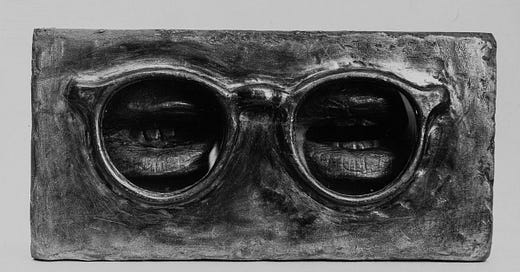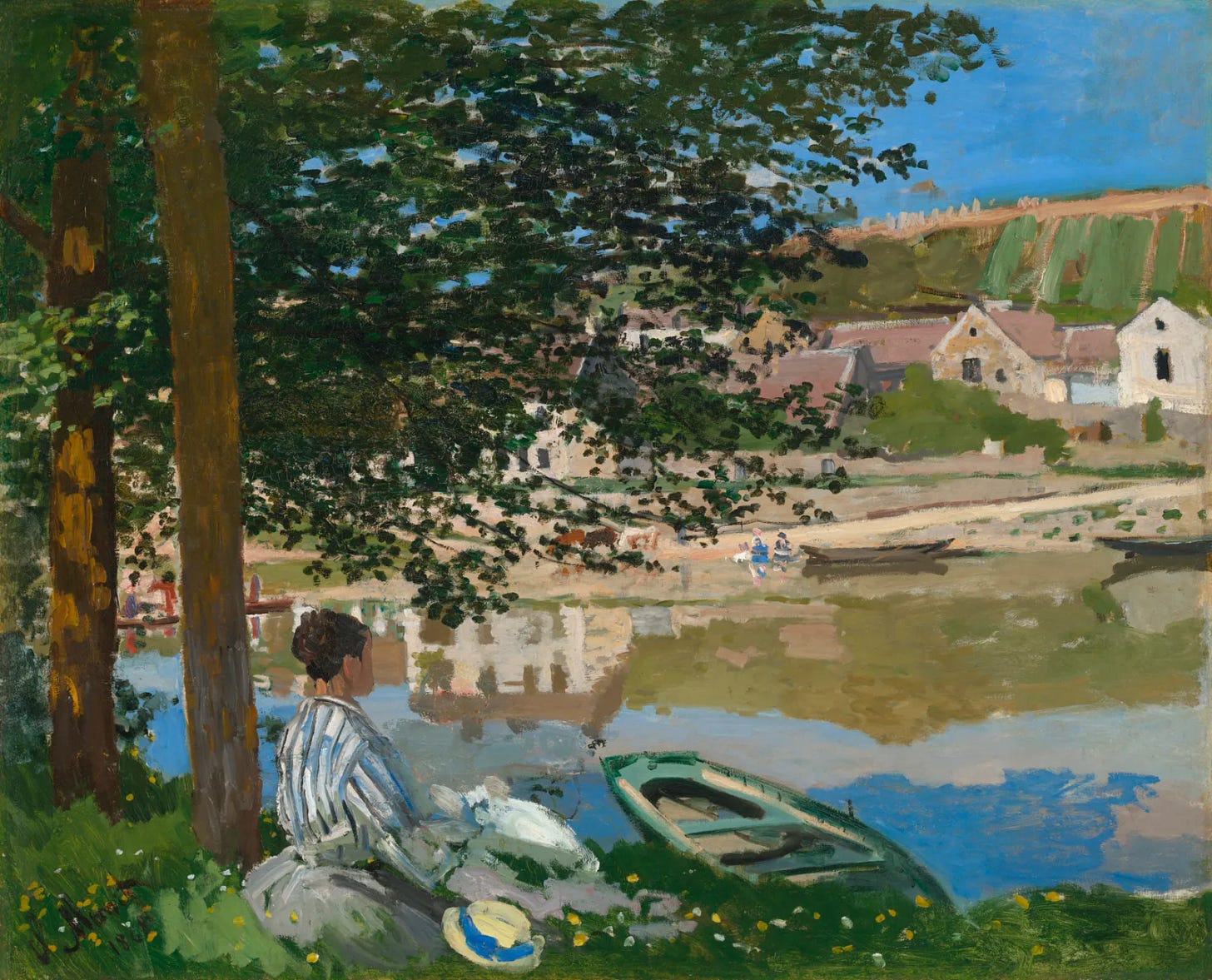Before continuing with Part 2 of “Revisiting the Educated Eye,” I thought I would write a bit about my own experiences as an art journalist.
In 1994, on the cusp of a divorce, I went to work for ARTnews as a senior editor. I was 42 years old, a seasoned wordsmith who had freelanced successfully for major publications like GQ, Psychology Today, and Travel & Leisure, but at that point I needed the stability of a staff position in splitting from my spouse, who was then in San Francisco. I was in New York. It was complicated.
ARTnews, which has been in continuous publication since 1905, provided both a salary and a home of sorts among professionals with similar interests in art and backgrounds in publishing. It was a collegial staff in dreary, ramshackle offices on West 38th Street. Those in senior editorial posts (about five or six of us) all worked as editors and writers under the occasionally terrifying aegis of Milton Esterow, a veteran of The New York Times, who is still, in his 90s, writing for Vanity Fair and the Times on his favorite topic, Nazi looting of artworks from Jewish owners during World War II.
So we all wrote profiles, art and book reviews, occasional investigative pieces, and gossipy tidbits for a section called “ARTtalk.” Each file circulated among the staff, starting with the editor-in-chief, and went through copy editing, fact checking, and proofreading. And we edited stories from stringers, which could be a challenge of a different order. I recall editing a piece about masterpieces and the Mafia which was so inscrutable and poorly organized I essentially rewrote the whole damn thing, after finding the lede somewhere around page 11. The author, upon reviewing all the changes, claimed he couldn’t see any difference between my edit and his original.
During the 21 years I worked for ARTnews, first on staff and then as a contributing editor (e.g. a valued freelancer), I most enjoyed the occasional investigative piece and profiles of artists, dealers, and curators. In thumbing through a stack of clips three decades old (does anyone remember “clips”?), I found a reporting piece I did on the first test of the Visual Artists Rights Act, which would essentially have protected sculptures like Richard Serra’s Tilted Arc from being removed and/or destroyed willy nilly.
Bloody hell, I thought, rereading the piece, You were a pretty damn good reporter. You even waited till the article was published before sleeping with one of the lawyers. Always the consummate professional. Too bad he was married.
But I loved reviewing as well, and this was probably my best introduction to the New York art world, and the even bigger art world at large. Most gallery reviews ran about 250-300 words, longer coverage of museum shows might run to 750 words. Where did I even get the audacity to pass judgment, since I had not been seriously studying works of art since grad school, 20 years earlier?
I remember I was reading a lot of art criticism in my spare time, dusting off my old copies of Clement Greenberg’s Art and Culture, and Leo Steinberg’s Other Criteria. I read Peter Schjeldahl in The New Yorker, Arthur Danto in The Nation, and Jed Perl in The New York Review of Books. You’ll notice not a lot of female names here. Except for the nearly incomprehensible Rosalind Krauss (who was once my teacher at Princeton) not many find themselves collected in book form, although there were and are excellent women critics writing for newspapers and magazines and now the ‘net. Why has no one collected the writings of the late Barbara Rose or the eminently readable and eloquently alive Karen Wilkin? Why is Jerry Saltz more celebrated than his wife, Roberta Smith, until recently the long-time leading critic for the Times?
I have no easy answers, but for a funny and savage take on art criticism as it existed ten years ago, check out Brainard Carey’s interview with Rob Storr on Yale Radio.
Almost every critic has his tics: I loved the late Robert Hughes, a polymathic showman whose seductive way with words could send me into a swoon. But he was notoriously hostile to most contemporary art, and his zinger metaphors could change the way you interpret art, not always for the better. Once you’ve read his description of de Kooning’s sculptures as looking like giant nose pickings, you’ll never be able to see them any other way.
Schjeldahl could drive me bonkers with sentences so obtuse I used to run them by a copy-editor friend, and he once sent me scurrying to dictionary.com to look up nine words in one review. Is that great writing, as so many claimed before and after his death?
What did and do I learn from all this? A few things. The most compelling writing should hold your attention, avoid obfuscation, and at its best offer something new on an artist, a new way of apprehending works that may be as familiar as your old flipflops. At its very best, it should send you out the door to look at the work in person (not much I can do to follow that dictum living in Taos, NM, but we do enjoy occasional sprightly and well-curated shows, usually in Santa Fe).
A case in point is Jackson Arn’s recent review of Jackie Wullschläger’s new biography of Claude Monet in The New Yorker. Granted, it is not really a piece of art criticism, although he does make mention of the Impressionist show now at the National Gallery (closing January 19th—another exhibition I would have happily hopped Amtrak to see if I were still living in New York). But I loved his observations, which seem to be his own and not the biographer’s: “It is easy to forget how many of the key Impressionist images—of theatergoers, garden strollers, eaters, boaters, slouchy picnickers—were made by people with almost no leisure time of their own.”
And this about a painting called On the Bank of the Seine, Bennecourt (1868): “The river’s fidgeting surface is this painting’s real interest, but the surface refused to play by a clear set of rules.”
Then he goes and spoils it all by remarking, of Poppy Fields near Argenteuil (1874): “Things refuse to come all the way into focus; the sweets of bright color leave their pineapple aftertaste.” Pineapple aftertaste? What the hell? Where are his editors?
But in general, I like Arn. He does his research and wears his knowledge lightly. He’s willing to take on novel, not particularly “arty” subjects, like a tattoo convention and the Sphere in Las Vegas. He also has the luxury of opining for thousands of words (the review of the Monet bio clocked in at about 4,100); the longest reviews I’ve written have been in the 1000-word range for The Wall Street Journal.
I’m not complaining. Writing hundreds of reviews for ARTnews over 20-plus years helped sharpen my “eye” (the pesky subject of last week’s post, which will be picked up again next Sunday) and afforded me a familiarity with art galleries and how they work. In the course of a couple of decades one could also follow the growth of an artist’s career—not everyone, but a few standouts dear to my heart like Tony Oursler, Richard Tuttle, and Vija Celmins. Add in the regular rounds of weekend gallery strolls, the press previews, museum shows, and occasional junkets to places like Seoul or Cardiff or Nashville (and both ARTnews and the WSJ strictly forbade writing about subjects encountered on press trips—never mind, you pitched to lesser publications, with more lenient standards).
Do I miss it? You better believe it. But times change. Milton Esterow sold ARTnews in 2015, and virtually all the contributing editors were dropped without so much as a gold watch or a note of “thanks for your service.”
But one moves on, and I’ve enjoyed publishing Vasari21 and then running a gallery for nearly three years. I’m researching a book idea right now and hoping my faculties and my pen remain sharp enough to peel off some good thoughts, with no pineapple aftertaste.







Ann, Discovering your writing has been a pleasure, but on the subject of art reviews, I have to weigh in. I also wrote for Art News (free lance reviews) as well as many other publications, but I always have felt that the main purpose of the contemporary art critic/reviewer/writer is to place that art within a cultural/social context for the reader. It's more than a thumbs up, or thumbs down situation, and it is even a bit more that weighing the work against art history. Writing and reading about contemporary art is a way of better understanding ourselves and times.
This is an extraordinary piece, Ann. You were modest in your assessment of yourself as a critic; and to judge you as a writer, only superlatives suffice.